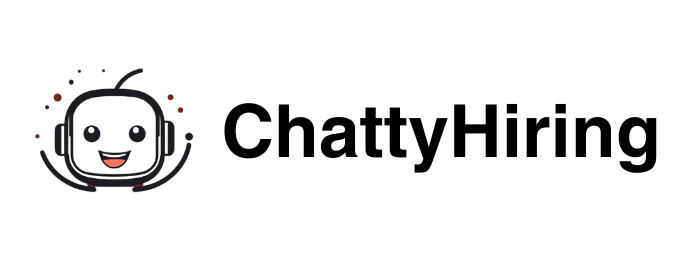Recruiters looking to attract passive talent need to focus on more than just posting job listings. Effective search engine optimization (SEO) for recruiters helps job ads appear where potential candidates are already searching, even if they aren’t actively looking for a new role.
Optimizing job listings with the right keywords and clear, targeted content increases visibility. This draws the interest of high-quality candidates who might otherwise be missed.

By improving search engine rankings through SEO, talent acquisition specialists can drive more traffic to their careers pages and job boards. This creates better opportunities to showcase the company’s employer brand and stand out in a competitive market.
Using proven SEO strategies makes job postings easier to find and more appealing to passive talent.
Understanding how search engine optimization works in recruitment means hiring teams can reach the right people without relying on outdated methods. From keyword research to optimizing job descriptions, every detail plays a role in capturing the attention of skilled candidates who aren’t actively applying but are open to the right offer.
For step-by-step guidance, SEO for recruiters covers practical ways to enhance job listings and attract passive talent effectively. For more on this, check out detailed guides like this one on SEO for recruitment.
Understanding SEO for Recruiters
SEO for recruiters focuses on making job listings and recruitment sites easier to find on search engines. It involves using specific techniques like keywords and proper site structure to improve visibility.
Recruiters must grasp how SEO affects their online presence to attract more candidates. This is especially important for reaching passive talent who may not be actively searching but respond to well-placed job ads.
What Is SEO for Recruitment?
SEO for recruitment means optimizing job postings and recruitment websites so search engines rank them higher in results. This helps recruiters reach more potential candidates.
Unlike generic SEO, recruitment SEO targets terms job seekers use, such as job titles, skills, and locations.
Optimizing includes adding relevant keywords, fixing website speed, and ensuring mobile friendliness. These changes make it easier for search engines like Google to understand and display the content when users search for jobs.
Why SEO Matters for Hiring Top Talent
SEO is vital because many candidates start their job search on Google or other engines. If recruiters’ listings don’t appear on the first pages, they miss out on qualified people.
Good SEO helps reach passive talent—those not actively looking but open to new roles if approached.
Strong SEO builds a recruiter’s online presence, increasing brand trust and visibility. This attracts both candidates and clients.
Key SEO Terminology Recruiters Need to Know
Keywords: Words or phrases candidates type into search engines. Using the right keywords in job titles and descriptions is essential.
On-page SEO: Everything done on the website, like content quality, keyword placement, and meta tags.
Off-page SEO: Actions outside the site, such as getting backlinks or social media mentions, that boost site authority.
Mobile-friendly: A site that works well on phones and tablets. This is important since many users job hunt on mobile devices.
Search engine ranking: The position a page holds in search results; higher rankings receive more clicks.
Understanding these terms helps recruiting teams apply SEO effectively and improve their job listing reach. For detailed strategies on recruitment SEO, see this SEO for recruitment guide.
Conducting Keyword Research for Recruitment
Effective keyword research helps recruiters use the right terms that candidates often search for. Picking targeted keywords, using SEO tools, and focusing on long-tail and location-based keywords improves job listing visibility.
Identifying Targeted Keywords and Phrases
Recruiters should focus on keywords directly related to the job title and required skills. Terms like “software engineer,” “project manager,” or “marketing assistant” match what candidates type.
It’s important to include variations and synonyms to cover different search habits. Keywords should reflect the job level too, such as “junior developer” or “senior sales representative.”
Clear, specific phrases increase the chance of matching passive candidates who may search casually but know their role and industry keywords.
Recruiters can start by listing words candidates might use and testing these in search engines to see what appears. Understanding these targeted phrases helps tailor job listings to meet search intent.
Using SEO Tools for Recruitment Keyword Research
SEO tools like Moz Keyword Explorer, SEMRush, and Google Keyword Planner provide valuable data on keyword volume and competition. These tools help recruiters find popular search terms relevant to openings and compare how often candidates look for specific roles.
They also reveal related keywords and help expand the list beyond initial ideas. For instance, a recruiter might discover that “remote marketing jobs” or “entry-level accountant jobs” are commonly searched phrases.
Recruiters can apply this data to select keywords that balance popularity with ranking ability. This targeted strategy improves visibility on platforms where candidates actively look.
Long-Tail and Location-Based Keywords
Using long-tail keywords—phrases with three or more words—captures more specific searches, such as “entry-level digital marketing jobs” or “full-time graphic designer roles.” These keywords tend to have lower competition while attracting candidates with clear job intent.
Location-based keywords are essential, especially for roles tied to a place. Phrases like “marketing manager New York” or “jobs near me” target local candidates effectively.
Combining long-tail and location terms can significantly boost job listing relevance. For example, “remote software engineer jobs San Francisco” targets candidates looking for remote work in a specific area.
Including these keyword strategies ensures job listings appear in front of both broad and specific candidate searches.
SEO for Recruitment offers detailed tips on keyword research and tools.
Optimizing Job Listings for Discoverability

Making job listings easy to find requires clear titles, detailed descriptions, and well-crafted meta descriptions. Each part helps job openings appear in search results and attract the right candidates by using strategic keywords and clear language.
Crafting SEO-Friendly Job Titles
Job titles need to be precise and include keywords that candidates use when searching. This means using common job titles like “Software Engineer” rather than vague alternatives.
Adding specifics like location or seniority can improve search ranking and clarity, for example, “Senior Software Engineer – Remote.” Avoid overloading titles with keywords or unnecessary words.
Keep them concise and focused on the role itself. This helps job boards and search engines recognize the job quickly.
Including job function, level, and location in the title improves visibility. Clear titles also attract candidates who scan listings quickly.
They should reflect the actual job and skills required rather than internal or creative phrases.
Writing Compelling Job Descriptions
Job descriptions must focus on relevant skills, responsibilities, and qualifications. Use keyword optimization naturally by including terms candidates search for, such as specific software, certifications, or industry jargon.
Structure descriptions with clear headings and bullet points to improve readability. This also helps search engines better understand the content.
Include details about the role’s goals and what the candidate will do daily. Avoid vague or generic wording.
Instead, highlight what makes the job and company unique, emphasizing career opportunities and growth. Clarity and relevance make job postings more attractive and improve ranking.
Effective Use of Meta Descriptions
Meta descriptions are short summaries that appear under job titles in search results. They must be clear, concise, and contain primary keywords related to the job.
Keep meta descriptions between 120-160 characters to ensure they display fully. Include important details, like job type and location, to encourage clicks.
A well-written meta description acts as a mini-ad for the job post. It improves the likelihood that passive and active candidates will click through from search engines to read the full job description.
Using actionable language like “Apply now” or “Join our team” can increase engagement while keeping the focus on the job’s key aspects. For more insights, see SEO for job postings.
Leveraging Structured Data and Schema Markup

Using structured data and schema markup helps make job listings easier for search engines to read and display. This improves how jobs appear on search results, increasing chances of reaching qualified candidates.
Proper use of jobposting schema markup and rich snippets can boost visibility on platforms like Google for Jobs and local search results.
Implementing JobPosting Schema Markup
JobPosting schema markup is a specific type of structured data designed for job listings. It provides detailed information such as job title, description, location, salary, and application deadline.
Adding this markup to a job post’s HTML code allows search engines to better understand and categorize the job. To implement this, recruiters can use tools like Google’s Structured Data Markup Helper to generate the correct code.
The markup should be embedded directly on the job listing page either as JSON-LD or microdata format. Key elements to include:
- Job title
- Job description
- Hiring organization
- Location
- Salary range
- Date posted and expiration
- Employment type
This markup helps jobs appear in Google for Jobs and increases the chances of showing up in relevant local search results.
Boosting Visibility with Rich and Featured Snippets
Rich snippets display extra details about a job listing directly on search results. These can include salary info, company ratings, and job location.
Using structured data markup correctly increases the chance of these enhanced listings. Featured snippets highlight specific parts of a job description or FAQ in a box at the top of search results.
While not guaranteed, structured data can make pages more likely to be selected for these spots. Both rich and featured snippets improve click-through rates by making job posts stand out.
Structured data enhances how job listings are presented, making them more appealing to passive job seekers who may not be actively searching but browse search results.
By focusing on schema markup and structured data, recruiters increase the visibility and attractiveness of job posts on search engines. This technical SEO approach positions job listings for higher engagement and better reach.
For guidance, see how to optimize job listings with schema markup to land more roles on Google for Jobs.
Enhancing Recruitment Website SEO
A strong recruitment website needs clear structure and useful content to improve online visibility. Focusing on how URLs are built, creating targeted landing pages, and maintaining consistent recruitment content helps attract the right candidates and boosts search engine rankings.
Optimizing URL Structure and Header Tags
URLs should be simple, descriptive, and include relevant keywords. For example, a URL for a marketing job could be /jobs/marketing-manager rather than a string of numbers or unrelated words.
This makes the link easier to read and helps search engines understand the page’s purpose. Header tags (H1, H2, H3, etc.) organize content and signal importance to search engines.
The main job title should use an H1 tag, while responsibilities and qualifications can be under H2 or H3 headers. Clear headers improve readability and help on-page SEO by matching keywords recruiters want to rank for.
Building Effective Landing Pages
Landing pages for specific job roles or departments should be designed to quickly provide value. They must load fast, have clear calls-to-action, and include relevant recruitment content such as detailed job descriptions and benefits.
These pages should also link to related career pages and blog content to keep visitors exploring. Internal links support SEO and enhance the candidate’s experience by showing related roles or company culture.
A focused landing page helps improve ranking on search engines and attracts passive talent by answering their key questions.
Creating Consistent and Relevant Content
Consistency in posting recruitment content, like job listings and career advice blogs, builds authority with search engines.
A strong content strategy ensures keywords related to the company and open positions appear regularly.
Content should always be relevant to target candidates. Include clear information about job expectations, company values, and the hiring process.
Mix up your formats—text, images with alt tags, and videos—to boost engagement and improve page speed, both of which help with SEO.
Improving Mobile and User Experience
A recruiter’s job postings need to work smoothly across devices and load quickly. Make sure candidates can easily navigate the application workflow.
These steps keep job seekers engaged and help reduce drop-offs during the application process.
Ensuring Mobile Optimization
Most candidates browse jobs on their phones, so your career site must be fully mobile-friendly.
Recruiters should use responsive design that automatically adjusts to any screen size. Buttons and links should be easy to tap, with enough space between them.
Text should be readable without zooming. Application forms need to be straightforward to complete on smaller screens.
Mobile optimization also means avoiding pop-ups or ads that block content. Tools like Google’s Mobile-Friendly Test help you check if pages meet standards for a solid mobile experience.
Optimizing for Fast Load Times
Website speed is critical for keeping candidates interested.
Slow pages frustrate users and increase the chance they’ll leave before applying.
Recruiters should minimize image sizes, use efficient coding, and consider a content delivery network (CDN) to serve content quickly across different regions.
Test your load times regularly with tools like Google PageSpeed Insights.
Aim for your pages to load within three seconds or less—longer waits lead to higher bounce rates.
Fast loading also helps your job postings rank higher in search results, making them easier for candidates to find.
Providing a Clear and Simple Application Process
The application process should be straightforward and transparent.
Avoid lengthy forms that ask for too much information upfront. Break down applications into short sections or use progress bars so candidates know what’s left.
Keep instructions simple and easy to spot. Make “Apply Now” buttons stand out so users can start the process right away.
Clear error messages help candidates fix mistakes without confusion.
A smooth application flow improves candidate satisfaction and increases completion rates.
Promoting Job Listings Beyond Your Website
Recruiters need to get job postings in front of more candidates by expanding beyond their own career sites.
Using multiple channels increases visibility and reaches different talent pools.
Utilizing Job Boards and Aggregators
Job boards like Indeed are still essential for reaching active job seekers.
Posting on popular boards ensures your listings show up where candidates are searching.
Using well-known aggregators helps consolidate listings across platforms, boosting exposure.
Optimize job titles and descriptions with keywords candidates use, like “jobs near me” or specific roles.
Including clear location info helps with search filters.
Update your listings regularly to keep them fresh and higher in job board algorithms.
Some sites offer paid features for more visibility—these can be worth it for hard-to-fill roles.
Maximizing Social Media Reach
Social media is a top way to connect with passive talent who aren’t actively job hunting.
Share job posts on platforms like Facebook, Twitter, and Instagram to target specific audiences.
Use hashtags like #NowHiring or #JobsNearMe to increase discoverability.
Post engaging visuals or short videos to stand out in busy feeds.
Paid campaigns let you target by location, skills, and interests, reaching candidates who fit your profile but aren’t on job boards.
Encourage employees to share listings for even broader reach through their own networks.
Leveraging LinkedIn and Glassdoor
LinkedIn is an excellent tool for job promotion.
Use LinkedIn’s job posting feature and tailor descriptions for clarity and SEO.
Add skills, industry terms, and location to improve your chances of showing up in searches.
LinkedIn also lets you reach out directly to passive candidates through InMail and connections.
Personalized messages about the role’s benefits often get responses.
Glassdoor is important for employer branding as candidates check company reviews and culture.
Keep your company profile updated and positive to attract applicants.
Include open positions on Glassdoor so they’re part of candidate research.
Both platforms offer paid ads to promote listings to specific professional groups, expanding your passive talent reach.
Enhancing Listings with Google My Business
Google My Business (GMB) helps your job listings show up in local searches like “jobs near me.”
Create or update your company’s GMB profile to improve local SEO and online presence.
Add detailed business info, like address and phone number, to GMB listings.
Post job openings as updates on GMB to increase visibility in Google Search and Maps.
GMB reviews and photos help build trust with candidates checking your company out before applying.
Regularly monitor GMB insights to see how many people find jobs through Google searches.
Adjust your strategy based on what’s working.
For more details on these approaches, check out Recruit CRM’s SEO for job postings walkthrough.
Earning Quality Backlinks to Boost SEO Rankings
Building a solid backlink profile is key for recruiters who want their job postings to be seen.
Quality links from trusted websites help search engines rank your pages higher.
Focus on trusted industry sites, recruitment platforms, and authentic testimonials to increase your site’s authority and attract passive talent.
Building a Strong Backlink Profile
A strong backlink profile means getting high-quality links from reputable sources.
Prioritize links from established industry sites, recruitment blogs, and professional forums.
These serve as endorsements that signal credibility to search engines.
Stay away from low-quality or spammy backlinks—they can hurt your rankings.
Build links gradually over time for long-term SEO success.
Track where your backlinks come from so you can refine your approach and go after the best link-building opportunities.
Outreach to Industry and Recruitment Sites
Outreach is one of the best ways to earn backlinks.
Reach out to industry-specific blogs, job boards, and online communities to share your content and job listings.
Personalize your outreach and offer value, like exclusive insights or data, to increase your chances.
Build relationships with authoritative recruitment agencies or career websites.
Collaborations on guest posts or resource sharing can lead to valuable backlinks that boost your job postings’ authority.
Timely follow-ups after making contact help with link-building success.
Showcasing Testimonials and Case Studies
Sharing employee testimonials and detailed case studies on your site encourages natural backlinks.
When testimonials spotlight successful hires or partnerships, they offer social proof others want to reference.
Publish case studies about hiring challenges solved or standout candidate placements.
Include client or candidate logos and quotes to enhance trust.
These real stories build credibility and encourage recruitment platforms and partners to share your content, earning more excellent links.
Showcasing Employer Brand and Company Culture
A clear employer brand shows what your company stands for and how you treat your people.
It helps job seekers understand your work environment and what makes you unique.
Share real examples and facts about your workplace to build trust and draw interest.
Communicating Company Values
Recruiters should showcase the company’s core values in job listings and career pages.
Values like integrity, teamwork, and innovation should be shown in action.
Use simple statements or bullet points to link values to real workplace behaviors.
For example, if teamwork is a value, describe how teams collaborate on projects or solve challenges together.
Keep messaging consistent across your website, social media, and job descriptions.
This helps attract candidates who share your values and fit your culture.
Highlighting Growth and Career Opportunities
Job seekers want to know if they can develop skills and move up.
Emphasize your company’s commitment to professional growth—mention training programs, mentorship, or promotion tracks.
List specific career paths or share stories of employees who’ve advanced.
Include details about workshops, certifications, or regular performance reviews to highlight your investment in employee success.
Clear info about growth shows candidates you’re serious about their future.
This can attract passive talent looking for long-term opportunities.
Incorporating Reviews and Employee Testimonials
Share honest feedback from current or former employees to build credibility.
Positive reviews on platforms like Glassdoor or LinkedIn influence how passive candidates view your company.
Include written or video testimonials that talk about real experiences with your culture, leadership, and work-life balance.
Encourage employees to leave reviews and share them in job listings or on social media.
This boosts transparency and strengthens your employer brand, making it easier to attract excellent talent.
For more on employer brand SEO, see SEO for recruitment.
Monitoring, Measuring, and Refining Your Recruitment SEO Strategy
To keep your recruitment SEO strategy effective, regular review and adjustments are essential.
Monitor performance, analyze how candidates find your listings, and make targeted improvements to maintain strong rankings and steady organic traffic.
Consistent effort lets you react to changes in hiring trends and search behavior.
Tracking SEO Performance Metrics
Track key SEO metrics like keyword rankings, click-through rates (CTR), and bounce rates to see how your job listings perform.
Use tools like Google Analytics and Google Search Console to measure organic traffic and user engagement.
Focus on metrics that show how candidates discover your listings and whether they lead to applications.
Regularly reviewing these numbers helps you see which keywords and job pages need updates to improve visibility.
A simple table to track monthly metrics might include:
| Metric | Purpose | Target Goal |
|---|---|---|
| Organic Traffic | Volume of visitors from searches | Steady growth |
| Keyword Rankings | Position for target job keywords | Top 5 positions |
| Bounce Rate | Percentage leaving quickly | Below 40% |
| Conversion Rate | Visitors applying or contacting | Above 5% |
Analyzing Organic Traffic and Search Behaviors
Review where your organic traffic comes from and how visitors interact with job listings.
Look at search queries that bring candidates to your site and the paths they take once they arrive.
Find patterns in search behavior to spot popular job types or shifts in search intent—like more interest in remote roles.
Use behavior flow reports in analytics tools to see which pages keep visitors engaged and which cause drop-offs.
This data helps you make content tweaks that better match candidate expectations and current hiring trends.
Refining Content and Improving Consistency
Improving recruitment content means regularly updating job descriptions with relevant keywords. Make sure to include clear details about each role.
Consistency in style and tone across listings helps build trust with candidates. Sticking to a steady posting schedule also signals reliability to search engines.
Recruiters should develop a content calendar to organize updates and new job postings. Using templates ensures every job ad includes essential info like location, salary range, and application steps.
Regular audits help identify outdated keywords or broken links that could impact SEO performance. This ongoing refinement boosts online visibility and helps attract passive candidates who browse job boards but aren’t actively searching.
-

A passionate advocate for the future of HR innovation. With expertise in leveraging AI to revolutionize recruitment processes, Carlos has a clear vision: empower HR teams while creating meaningful candidate experiences.
View all posts





